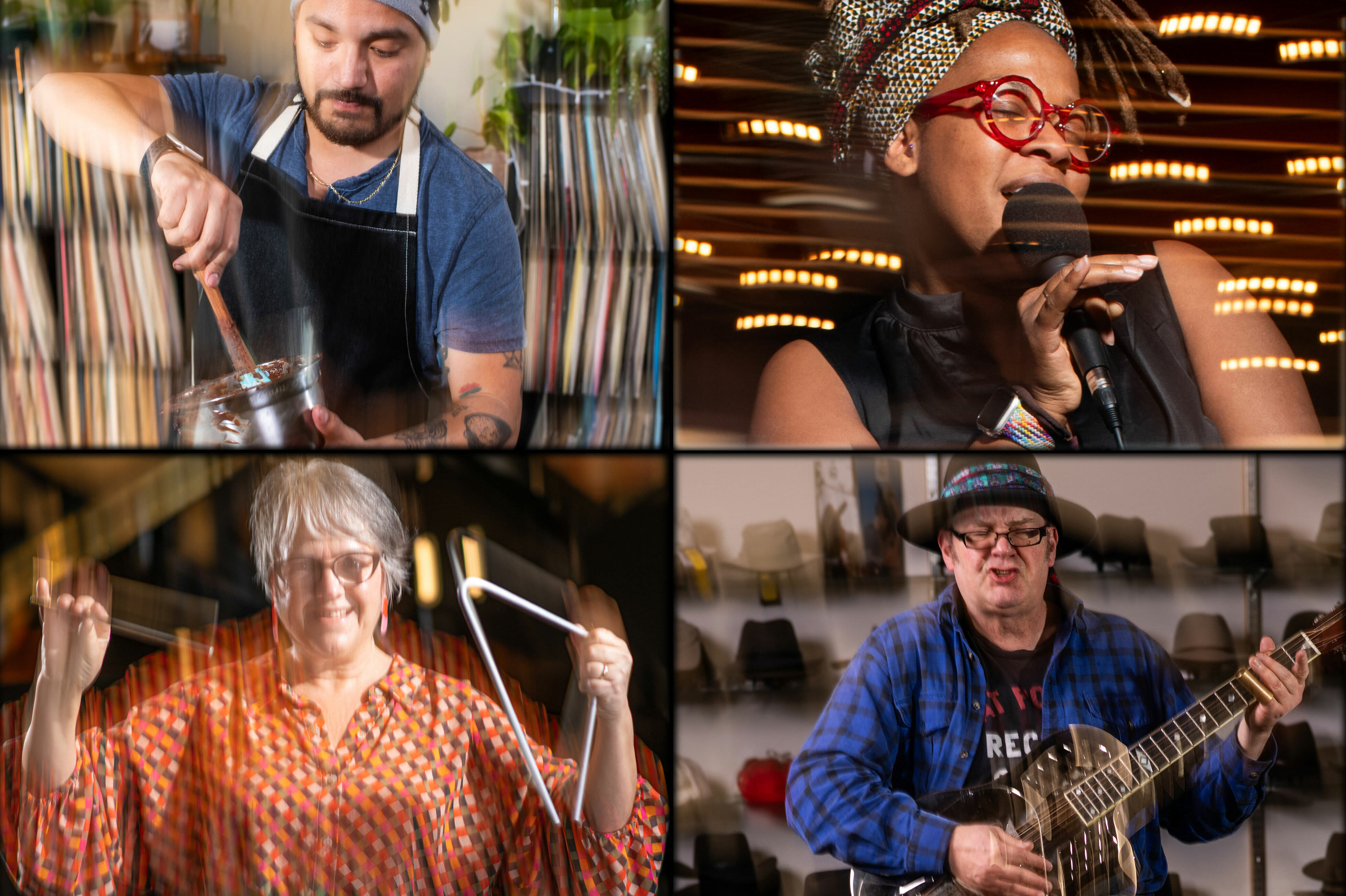A Fiendish Conversation with Shaun Scott

Image: Chantal Andrea
There’s an old adage from George Santayana that goes, "Those who cannot remember the past are condemned to repeat it." We could apply that to local filmmaker Shaun Scott, whose work strives to make sense of the big picture. The UW history grad and 2012 Stranger Genius finalist made waves with his first two avant-garde documentaries: Seat of Empire (2009) exploring Seattle’s past and Waste of Time (2010) about consumer capitalism and sustainability. In July he released his first feature film, 100% Off: A Recession-Era Romance, and he’s currently working on his next feature Pacific Aggression, which tells the story of a travel writer sent to tour the West Coast (from L.A. to Seattle) by his East Coast publisher. Between his many projects Scott managed to cocurate Occupy M.I.A., the upcoming photo exhibit on activism at the M.I.A. Gallery. While Scott has always been a curator of sorts (Seat of Empire was comprised of archival footage), the new project allows him a physical space to connect the dots between art and history.
We talked to Scott about Seattle’s activist past, his appreciation of critics, and his comedic failures.
Can you describe the Occupy M.I.A. exhibit from your standpoint?
When Mariane (Lenhardt), the director of M.I.A., asked me to cocurate the show, we sort of sat down and decided on a photo exhibit that commented on and evoked and demonstrated all of the many shades of activism in Seattle, past and present. We’re taking pictures from local artists, artists who were either based here or who took Seattle as their object of creativity, and juxtaposing them with historical images that are going to be gleaned from the Seattle Municipal Archives. The way it works is that the contemporary images are demonstrative of, chiefly, WTO and Occupy Seattle. And then we’re sticking those images, which are more fierce, next to a more subtle form of activism, in a sort of historical retrospective of the many ways that activism has shaped Seattle’s past. … It could be the massive civic effort that it took to get our county bus system, Metro, founded. It’s another form of activism that people don’t really think of as such. … [We’re] trying to give a coherent, and complicated, and very stylized picture of activism in Seattle as a whole.
What were you looking for in the pictures you chose?
The conversations that Mariane and I had when we were formulating the idea for the show was this theme of passive-aggressive. These two sorts of poles are going to occupy two opposite sides of the room. On the passive side, we were looking at images of either WTO or Occupy that demonstrated kind of the silent moments in any given protest, in a mob of people who are very agitated—introspective moments you can find in that very volatile setting. On the more aggressive side, we were looking for the more traditional depictions of activism: some of the stereotypical images you might’ve seen on the 5 o’clock news when WTO was going on in 1999. It worked out pretty cleanly that a lot of the Occupy images, for some reason, fit the side that was much more introspective, whereas the images from WTO were much more on the aggressive side. … Then there’s finally a third, sort of introductory, segment that’s gonna be toward the front of the room. It’s sort of more the historical basis out of which all these forms of activism exploded at the turn of the 21st century.
What profession would you have pursued if you hadn’t become a filmmaker?
I’ve tried a lot of things on, man. I remember freshman year at U-Dub, I had my mind set that I was going to be a stand-up comedian, of all things. For a year I basically conducted myself socially as somebody who wanted to tell jokes for a living—you can ask people how that went. After that, I think it was wanting to be a professor of philosophy. And then I think I finally settled into something when I rededicated myself to studying history. I think the last thing I had aspirations toward doing, before making the decision to make films, was to be a history professor. What’s always interesting is that I find all of these things that you leave behind—all these skins that you shed—they never really leave your creative nervous system.
What do you think of critics?
I think that the critical community serves a very important function. Obviously for the audience, and more subtly—especially when you’re talking about the good ones—for the creators themselves. For the audience members and the people who would look towards the certain generators of culture, you often need the role of criticism to really transmit the significance of a given cultural product. That’s something that’s much harder to do when you’re living sort of an everyday life. So we turn to The New York Times, or Time, or Seattle Met, or The Stranger to sort of give us a sense or perspective or meaning. I think more importantly, from where I sit as a filmmaker, the best criticism gives you an objective portrait from somebody who you should be able to trust, of what you’re creatively sort of attempting. I think it’s vital and an important part of any art scene.
Occupy M.I.A.
Aug 2–Sept 1, M.I.A. Gallery




